If you are looking for a popular Japanese pasta recipe, this Wafu Pasta is definitely worth trying. Its unique flavor, created by combining butter, soy sauce, and mushrooms, is sure to captivate you.
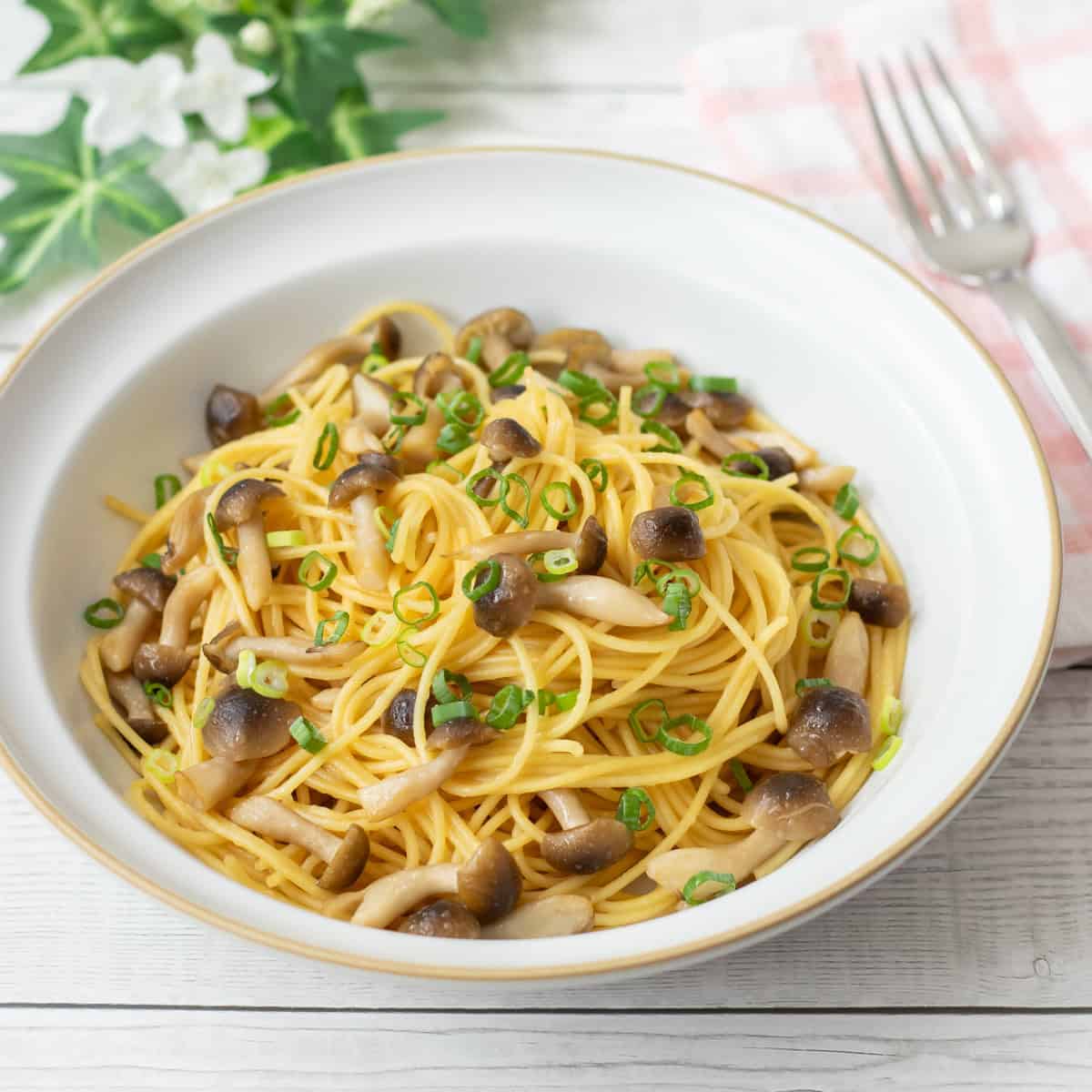
Jump to:
What is Wafu Pasta?
Wafu Pasta refers to pasta dishes made with Japanese ingredients and seasonings. "Wafu" means Japanese-style, and in Japan, pasta made with Japanese ingredients is called "wafu pasta." Interestingly, there is no specific flavor profile that defines the dish.
In other words, the seasonings used can vary widely. Soy sauce, dashi stock, and mentsuyu (a Japanese noodle soup base) are commonly used, and mushrooms and vegetables familiar in Japanese cuisine are often added as ingredients. As long as a dish includes pasta and some of these elements, it can be considered wafu pasta.
Among the various types of wafu pasta, one of the most popular versions is made with butter, soy sauce, and mushrooms. This combination is well-known in Japan and is an easy way to create a Japanese-style flavor. It is one of the dishes many Japanese people think of when they hear the term "wafu pasta." Try making it with this recipe!
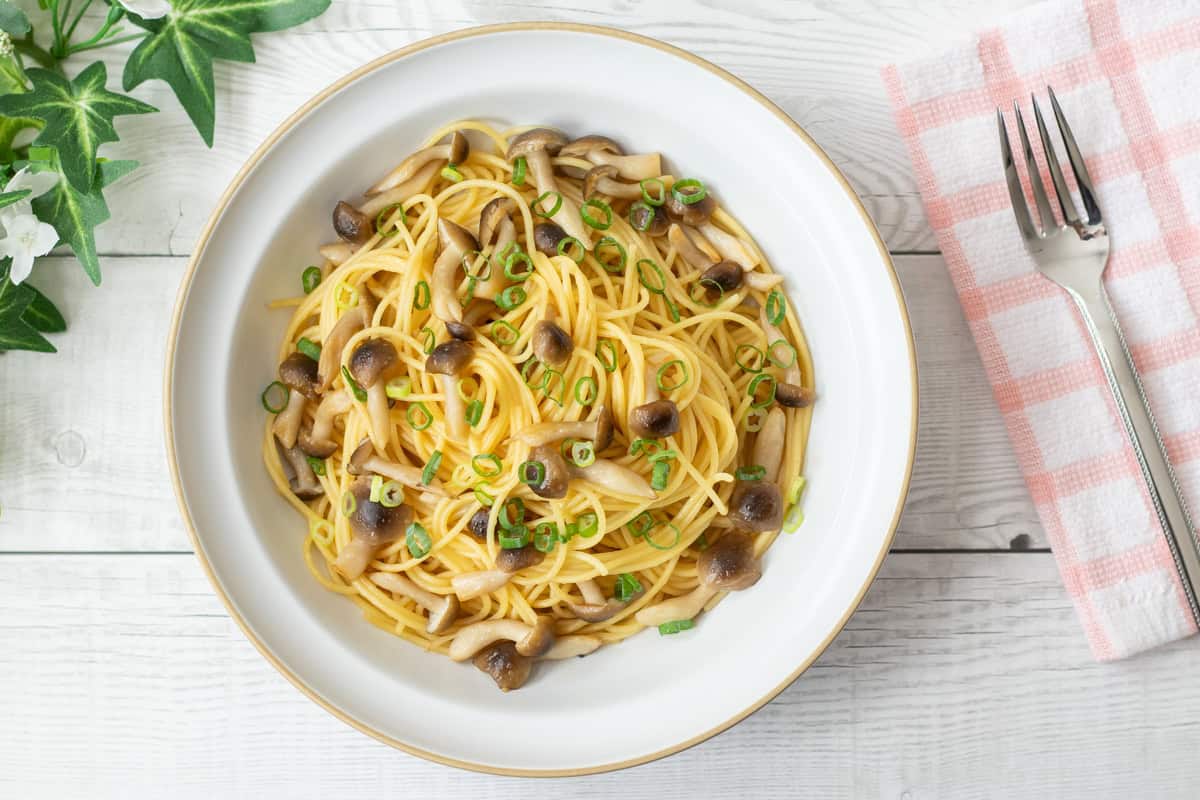
The role of mushrooms
Among the many Japanese ingredients used in wafu pasta, one of the most common is mushrooms.
Mushrooms have long been a staple in Japanese cuisine, and they are known for being rich in the umami component—glutamic acid. This umami pairs well with Japanese seasonings such as soy sauce, miso, and dashi, adding depth to the dish. Typical Japanese mushrooms include the following:
- Shimeji
- Shiitake
- Maitake
- Enoki
- Matsutake
Among these, shimeji mushrooms are the most popular choice for wafu pasta. They are rich in umami, and their pleasant texture adds a nice contrast.
While you can make this dish with other types of mushrooms or even omit them, I highly recommend using shimeji if they are available. They add a distinct flavor and texture, making your wafu pasta even more delicious.
Topping options
You can add a variety of toppings to this dish.
Popular ingredients include green onions (scallions), nori seaweed, and shiso leaves (perilla), which add both color and flavor. While the recipe calls for green onions, you can use other toppings to suit your taste.
Toppings aren't required, but adding them can really enhance the dish and make it more visually appealing—so be sure to give it a try.
Other Japanese-style pasta dishes
There are many unique pasta dishes that have been developed independently in Japan. All of them can be classified as "wafu pasta" because they incorporate Japanese elements, but they are usually referred to by their own distinct names. On my blog, I feature the following Japanese pasta dishes:
- Napolitan (Japanese Ketchup Pasta)
- Tarako Spaghetti
Each of these has a flavor profile that is quite different from the wafu pasta featured on this page. If you are interested in exploring more Japanese pasta recipes, be sure to give these a try. Each has its own unique characteristics and is well worth tasting.
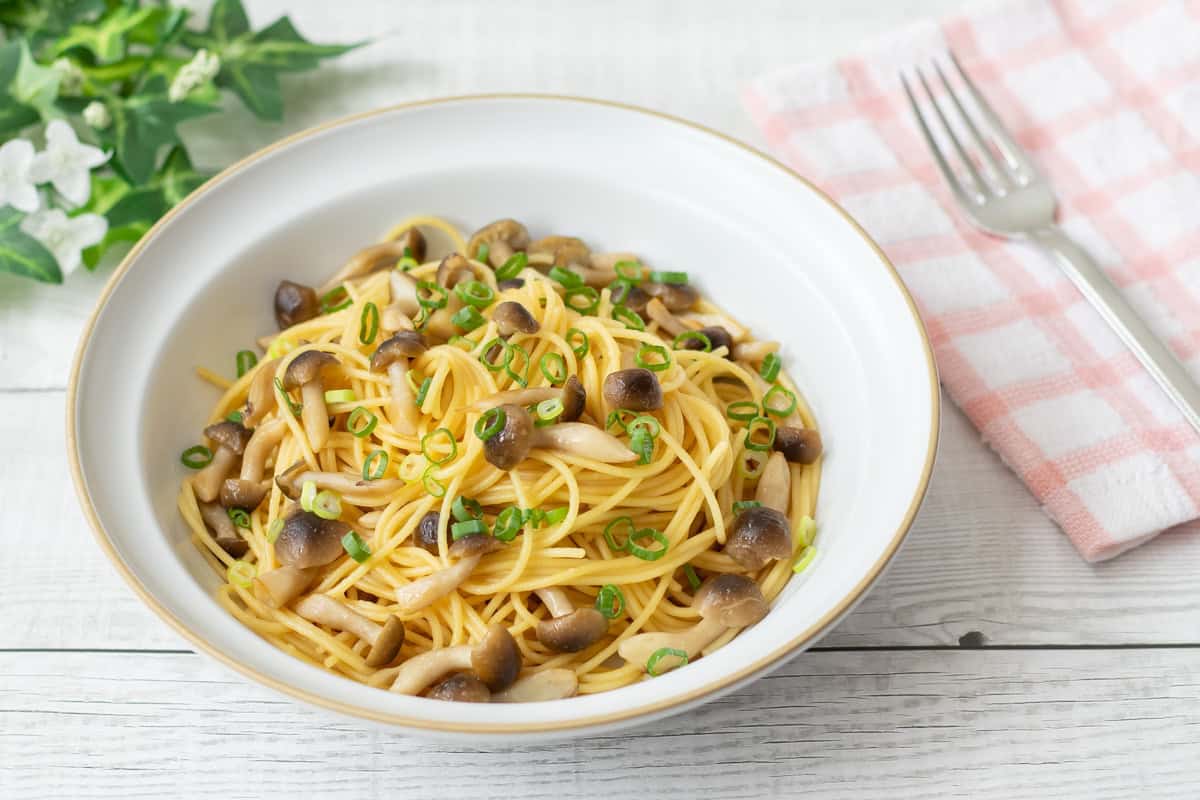
📋Step-by-step recipe
Ingredients
- 3.5 oz spaghetti
- 3.5 oz shimeji mushrooms or other types of mushrooms
- 2 tsp salted butter (0.17 oz/5 g per 1 tsp, for the mushrooms)
- a pinch of salt (for the mushrooms)
- 1 green onion / scallion
- ⅓ cup pasta cooking water (prepared in step 2)
Seasonings:
- 2 tsp salted butter (0.17 oz/5 g per 1 tsp)
- 2 tsp soy sauce
Instructions
🕒 Total: 15 mins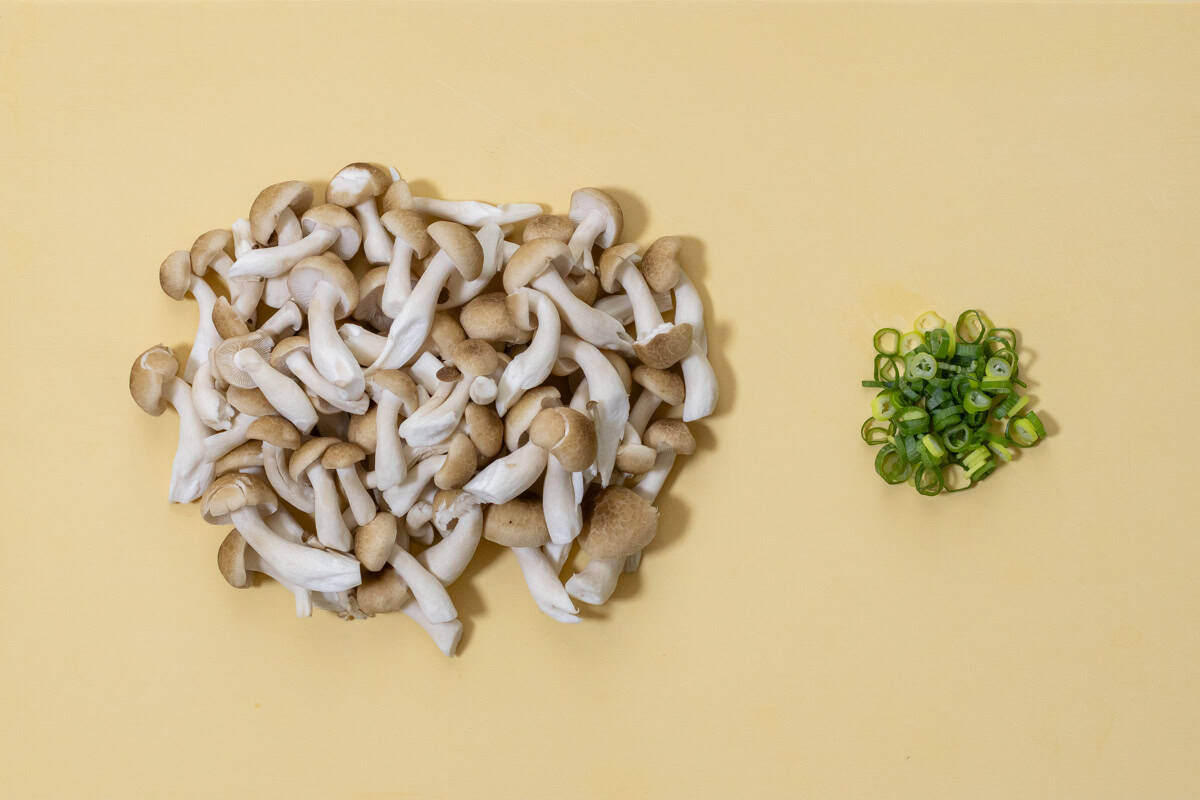
Step 1
Trim off the base of the mushrooms and separate them into individual pieces. Thinly slice the green onion.
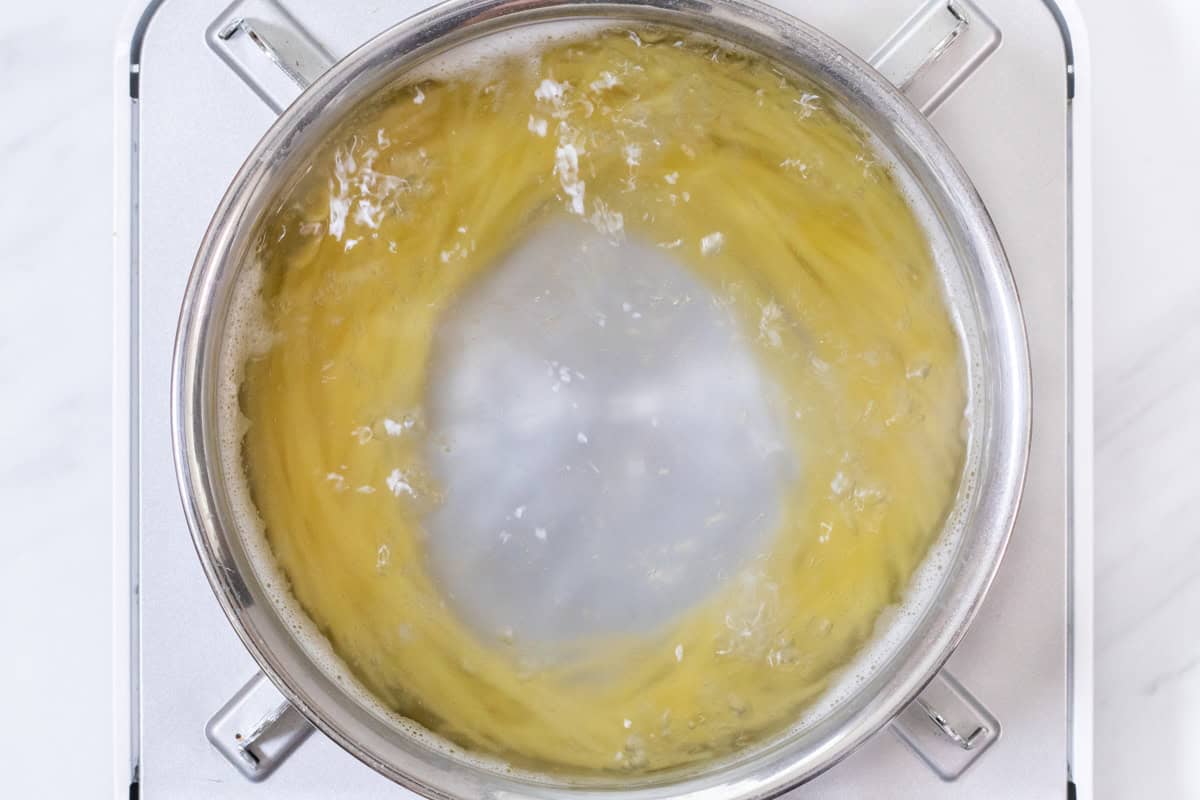
Step 2
Bring a large pot of water to a boil, then add salt (about 1% of the water's volume; not included in the recipe) and stir to dissolve. Cook the spaghetti for about 30 seconds less than the time indicated on the package. In the meantime, proceed with the next step.
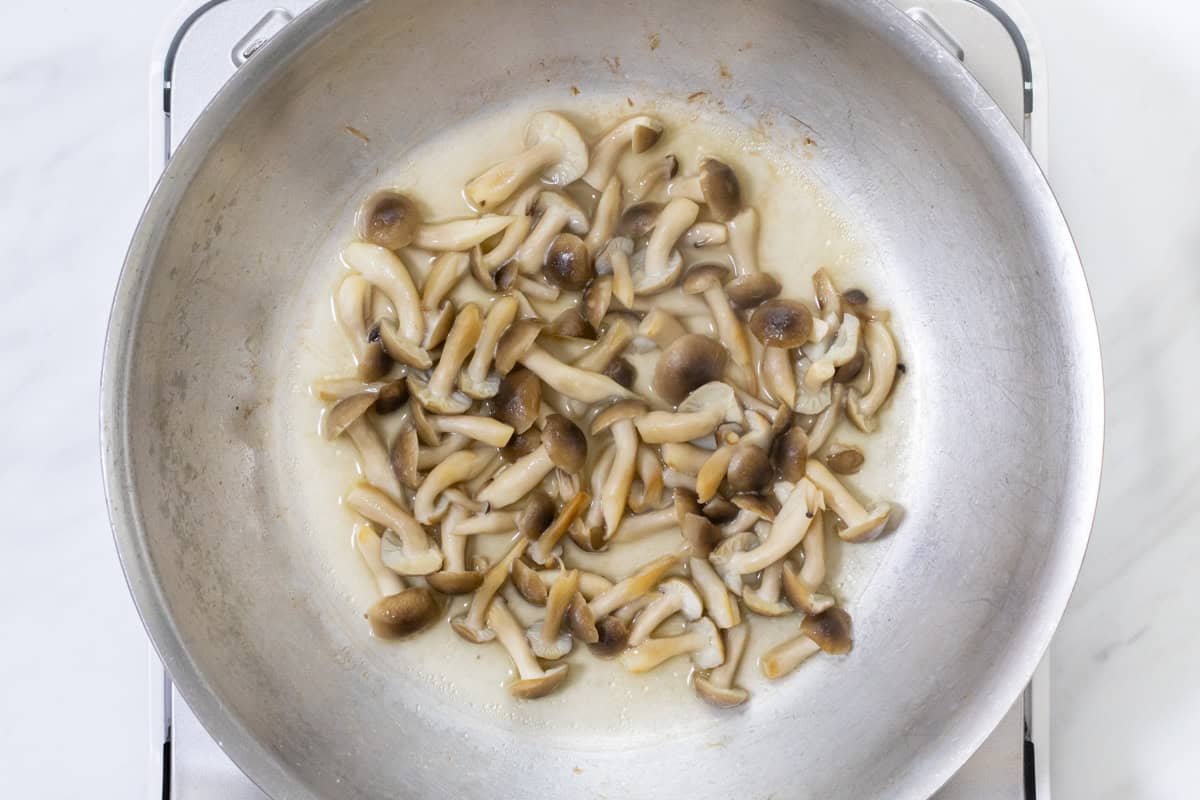
Step 3
Heat butter in a pan over medium heat. Once the butter has melted, add the mushrooms and sauté until lightly browned. Then, add the pasta cooking water (as specified in the recipe) and let it simmer for about 1 minute before turning off the heat.
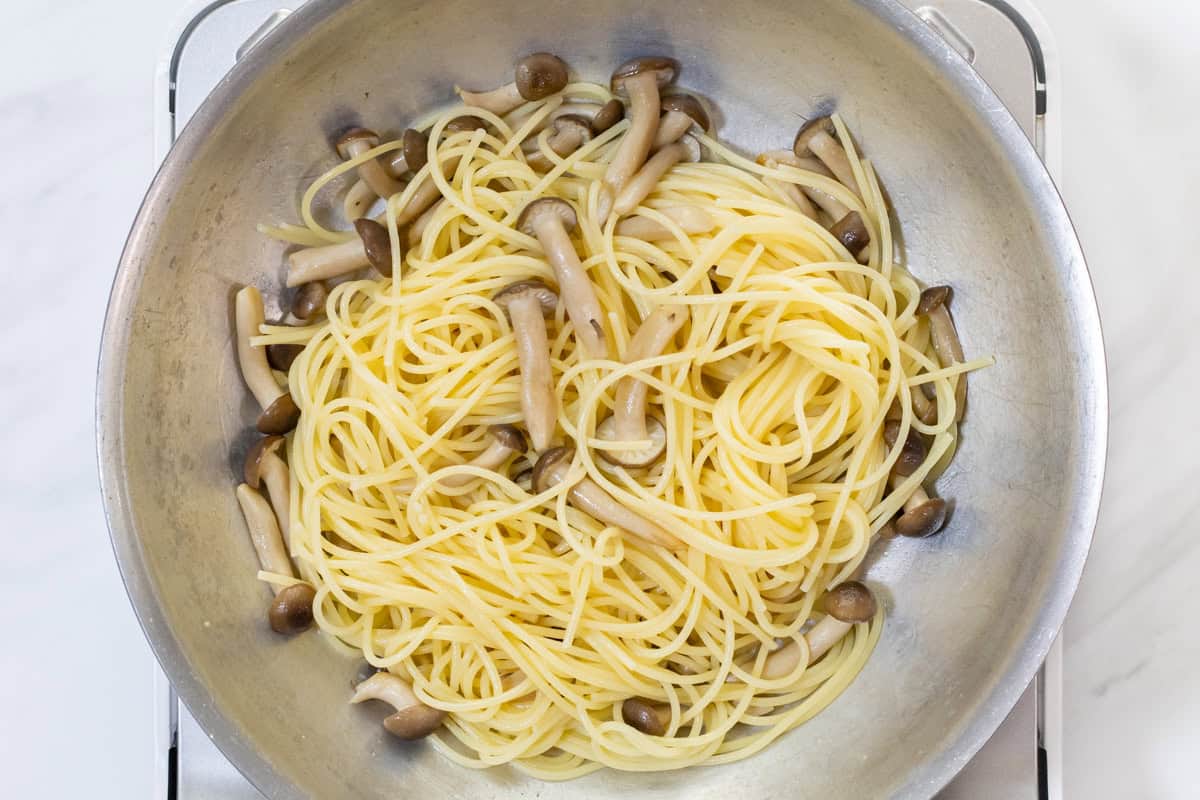
Step 4
Once the spaghetti is cooked, drain it in a colander. Add the spaghetti to the pan and cook over medium heat, tossing to combine until only a small amount of liquid remains.
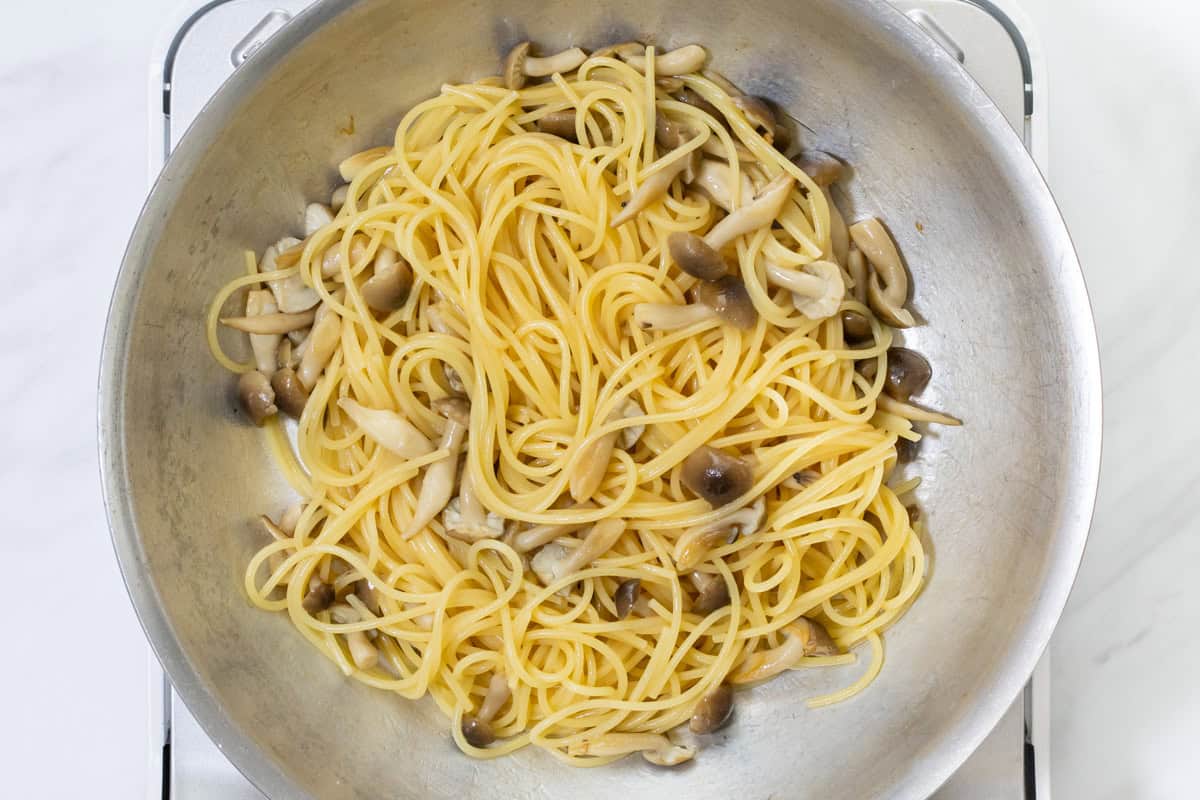
Step 5
Turn off the heat, then add butter and soy sauce to the pan, tossing the spaghetti until the butter has melted from the residual heat.
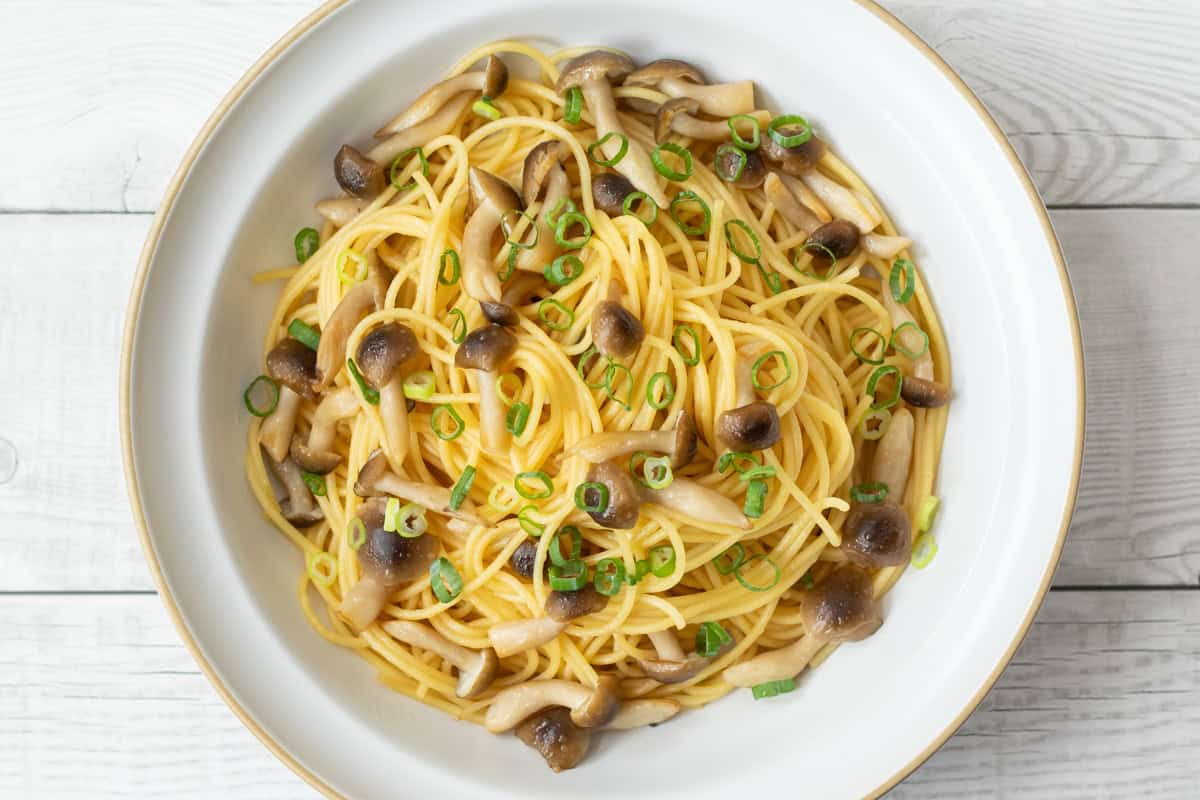
Step 6
Serve on a plate and top with the green onions.
To store
You can store it in the refrigerator for up to 2 days. However, it is best to consume it as soon as possible after cooking to enjoy its optimal texture.
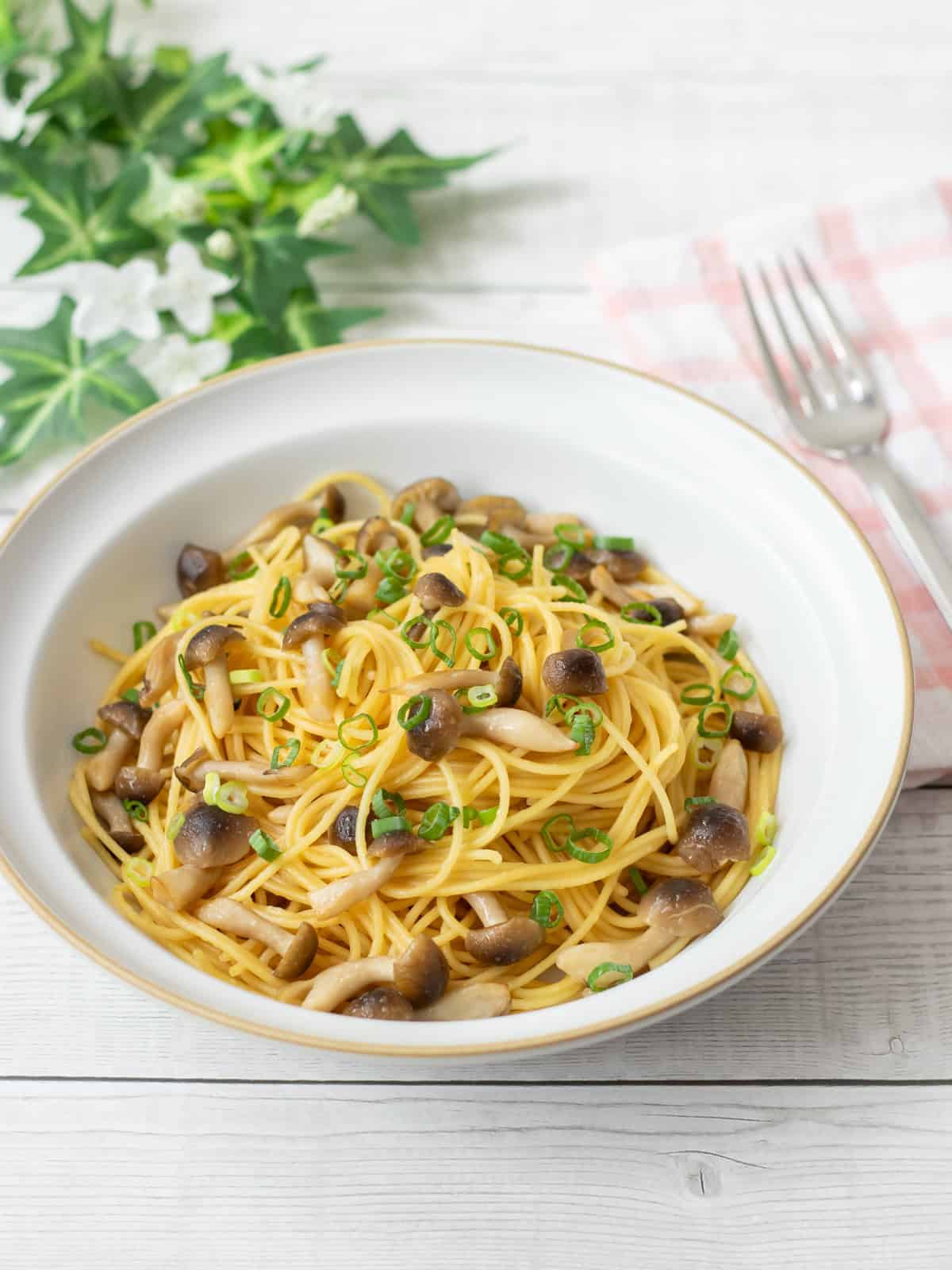
If you try this recipe, I’d love to hear what you think. Please consider leaving a review and star rating in the comments below. If you enjoyed it, I’d really appreciate it if you shared it with your friends.
Recipe card

Wafu Pasta (Japanese-Style Spaghetti)
Ingredients
- 3.5 oz spaghetti
- 3.5 oz shimeji mushrooms or other types of mushrooms
- 2 tsp salted butter (0.17 oz/5 g per 1 tsp, for the mushrooms)
- a pinch of salt (for the mushrooms)
- 1 green onion / scallion
- ⅓ cup pasta cooking water (prepared in step 2)
Seasonings:
- 2 tsp salted butter (0.17 oz/5 g per 1 tsp)
- 2 tsp soy sauce
Instructions
- Trim off the base of the mushrooms and separate them into individual pieces. Thinly slice the green onion.
- Bring a large pot of water to a boil, then add salt (about 1% of the water's volume; not included in the recipe) and stir to dissolve. Cook the spaghetti for about 30 seconds less than the time indicated on the package. In the meantime, proceed with the next step.
- Heat butter in a pan over medium heat. Once the butter has melted, add the mushrooms and sauté until lightly browned. Then, add the pasta cooking water (as specified in the recipe) and let it simmer for about 1 minute before turning off the heat.
- Once the spaghetti is cooked, drain it in a colander. Add the spaghetti to the pan and cook over medium heat, tossing to combine until only a small amount of liquid remains.
- Turn off the heat, then add butter and soy sauce to the pan, tossing the spaghetti until the butter has melted from the residual heat.
- Serve on a plate and top with the green onions.
Notes
- You can store it in the refrigerator for up to 2 days. However, it is best to consume it as soon as possible after cooking to enjoy its optimal texture.

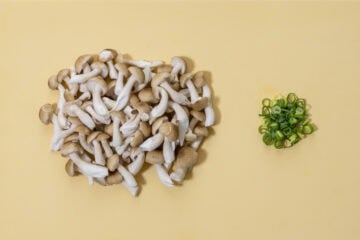
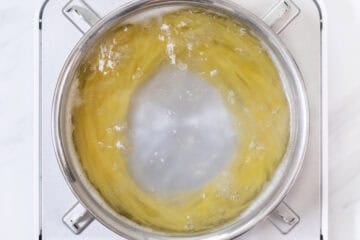
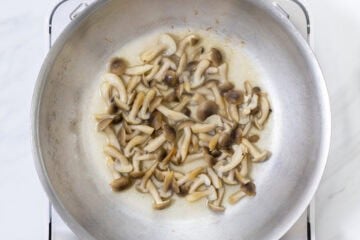
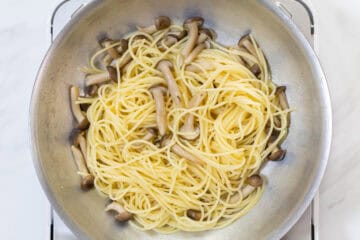
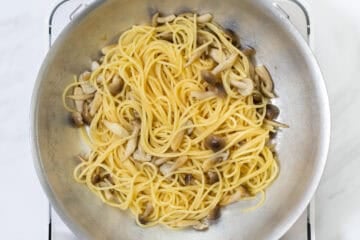
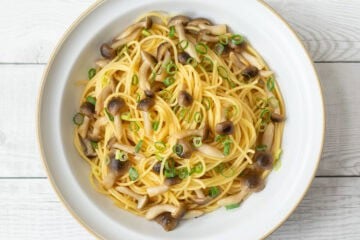
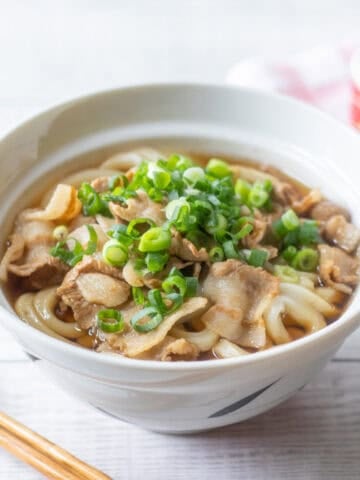
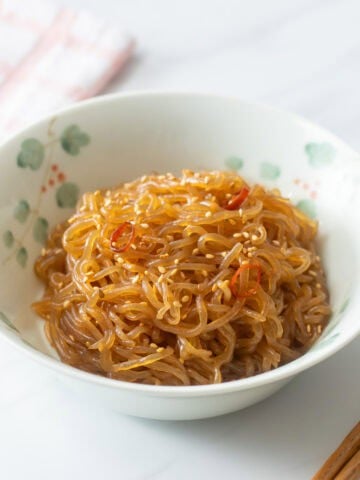
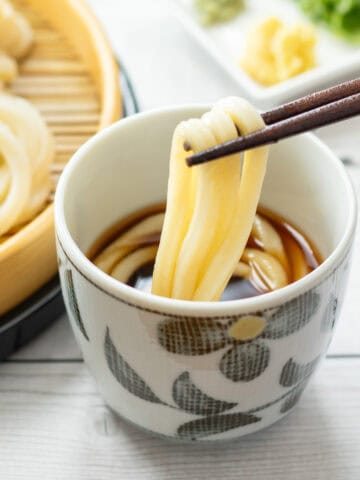
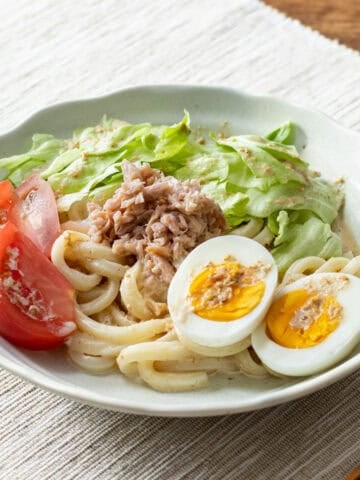
Leave a Rating and a Comment